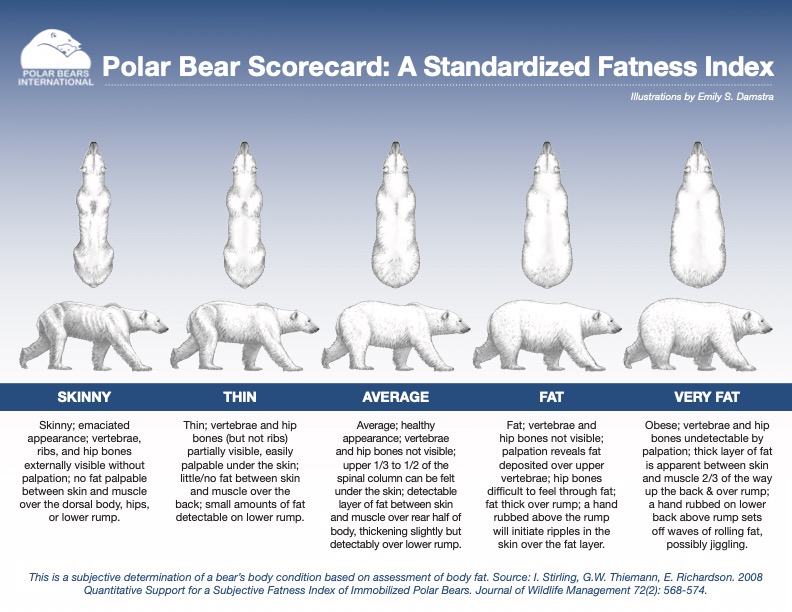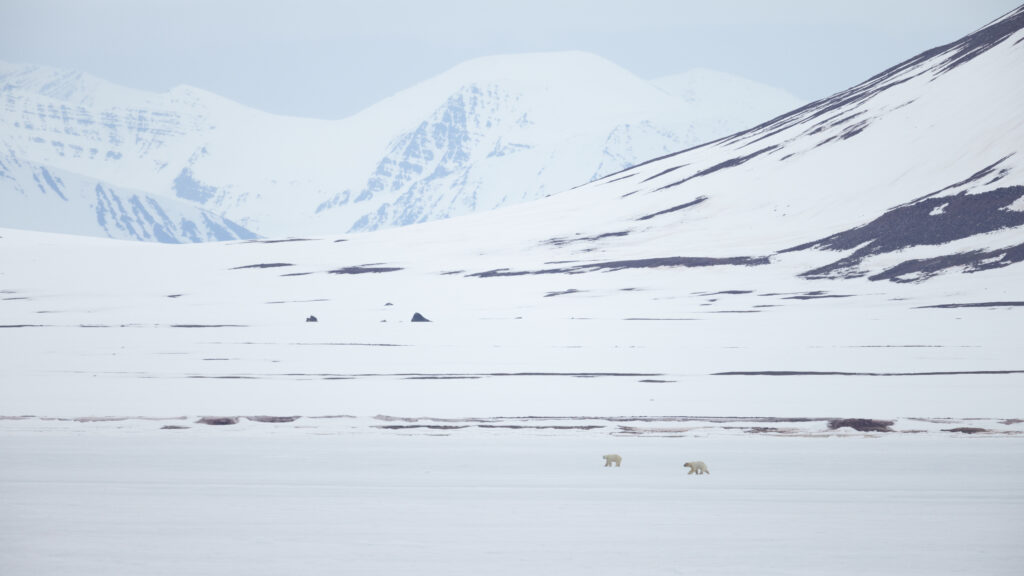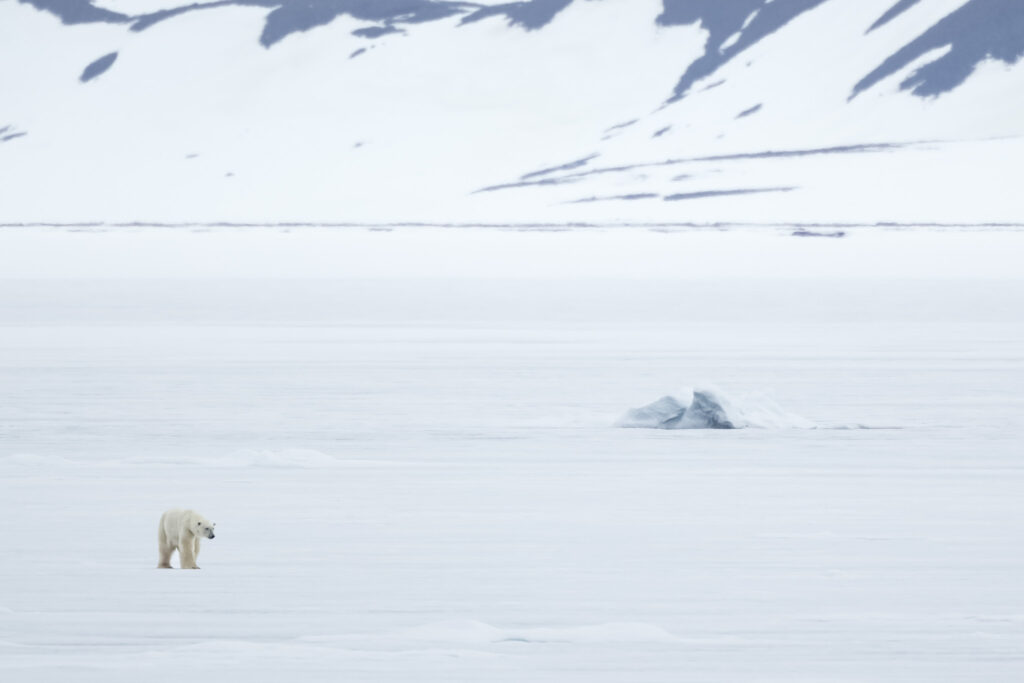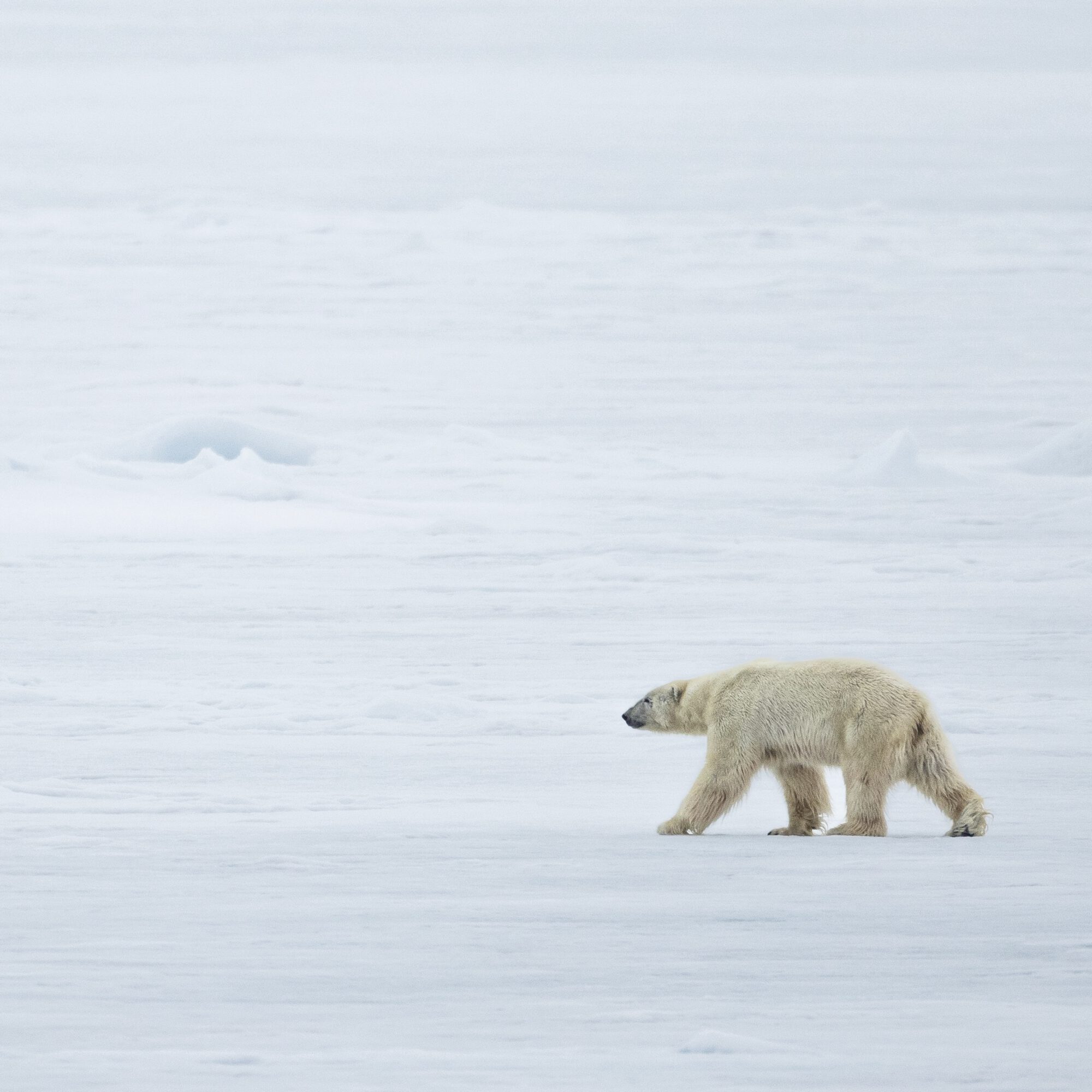The polar bears, social animals? Please let me explain.
Polar bears often the number one animal that our guests come to the Arctic for. This is why they have traveled so far north, and without a Polar bear the journey would not be complete.
The guests’ thoughts are often, “with today’s climate changes, let’s go, while we can still see these beautiful and dangerous animals.” Especially with social media nowadays we see the need to go further and visit the most extreme to put on their socials or check the bucket list. But even so, seeing a polar bear is never a given and always a gift, if we can find and observe these animals. Even though this is sometimes only possible with the use of binoculars. This is simply nature, which does not allow itself to be directed.
“One of our Polar bear encounters that comes to mind”
But fortunately, many times we get to enjoy these animals up close. One of our Polar bear encounters that comes to mind, was from the ship in June when there was still quite a lot of fast ice present in the fjords of Svalbard.
In the evening, we would anchor in a certain fjord to spend the night there, and then continue sailing to the next destination the next day. Once we arrived in this fjord, where at one point we could not sail deeper due to the fast ice, we saw two light yellow spots on the ice. Yes, there were two polar bears sleeping there. And with our binoculars we could see that these two polar bears were sleeping close to a whale carcass.
Usually when we encounter two polar bears of different sizes, we assume that this is mother and cub. But a little later when the polar bears woke up. Turns out it wasn’t mother and cub but a male and female polar bear. This became clear to us because these two animals started to mate with each other. The difference between a male and female polar bear can be seen, but from a distance and while sleeping this always remains difficult. Although June is no longer the time for mating behavior in polar bears, a logical explanation for this was later found.
Because when we encounter marine mammals during an expedition, including the polar bear, we fill in all available data and forward this data for research. This list of data includes location, time of day, activity, surface, and perhaps most importantly the body index score. From my zoological background, we also used this score and so a score from 1 to 5 can be given to the fatness of the animal. See image for this body index scorecart.
This allows tourism to contribute to research without having to send additional researchers into the field to collect data.
With the mentioned data we also sent a clear photo of the female polar bear who had a number on her body. We were able to send this photo immediately and then also received information from the researchers about this female polar bear to share with our guests.
And as we guessed by behavior, it also turned out to be a female polar bear.
Who had lost a one-year-old cub at the beginning of the year. This probably caused her to come into estrus at a different time than normal and therefore hang out with the male polar bear, making mating behavior possible at this time of year.

That evening we anchored at a suitable distance in front of the ice and the guests could view the sleeping bears whenever they wanted that night. But very early the next morning we were able to witness polar bear behavior that I like to use as an example during my lectures on polar bear behavior.
To our surprise, another polar bear male came walking from behind the hills from the west. This polar bear was large but had a body index score of only 2. Slowly and with a zigzagging movement across the ice, the third polar bear came closer to the whale carcass and the two polar bears that had gone back to sleep after mating. The wind ensured that the male was quickly noticed by the other two polar bears, and therefore woke up. The female got up and calmly moved east away from the whale carcass and away from the other polar bear. The male, on the other hand, walked in a straight line towards the large polar bear at a brisk pace.
Now what everyone expects from the documentaries, is that these two polar bears will fight. Because polar bears are portrayed as solitary animals that do not like to be with other animals. But something you would not expect happend.


“But believe me. Polar bears are actually very social animals”.
I was able to see for myself for the first time what I had been taught years ago. Polar bears are quite social animals. Polar bears learn from their mothers to ask permission to share in the food, and the polar bears do this in their own way. And so, we saw the larger but thinner male trying to touch the nose with his paw of the male who was watching over the carcass and the female he was with. This so-called slap on the nose does not always look friendly, and is therefore often enlarged and subtitled in documentaries as a fight for food. But immediately after this tap on the nose, the male walked back to his female and allowed the thin male to the whale carcass to eat from it. This proved to me what I had learned from a Polar bear researcher years ago.
The fact that these apexpredators are able to realize that survival of the species is more important than the individual. And when there is a source of food, these animals will share in order to survive.
So yes even when Polar bears are living a solitary lifestyle. Polar bears, are in fact also social animals.

